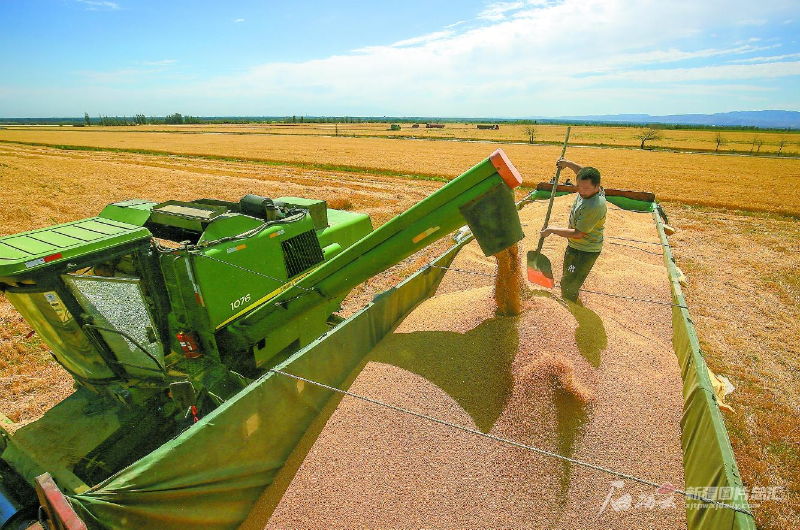
Photo taken on July 2, 2020 shows a farmer and a harvester work at the wheat field in Ningzhouhu Village of Ershilidian Town in Hutubi County of Channgji Hui Autonomous Prefecture, northwest China’s Xinjiang Uygur Autonomous Region. In 2020, the wheat planting area in Changji Hui Autonomous Prefecture reaches 2.264 million mus (one mu equals to 0.067 hectare), the mechanical harvesting rate is 100%. Photo by Tao Weiming
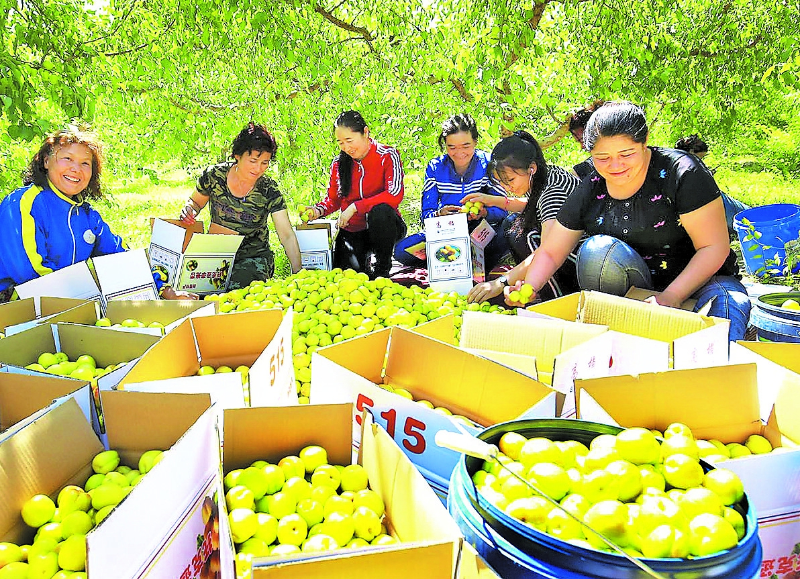
Photo taken on May 11, 2020 shows villagers sort and pack apricots at Nanhu Village in Xia Town in Toksun County of Turpan Prefecture, northwest China’s Xinjiang Uygur Autonomous Region. Toksun County is known as the "Hometown of Early Ripening Apricot in China". Photo by Li Jinghai
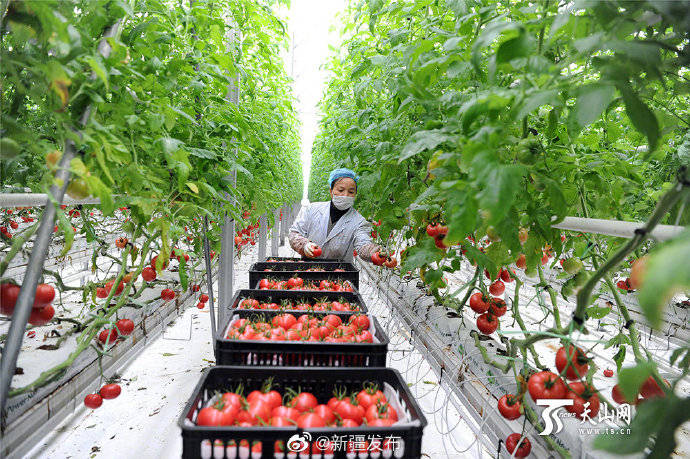
Photo taken on December 9, 2020 shows an employee picks tomatoes at the Xinjiang High-tech Plant Factory in Urumqi, northwest China’s Xinjiang Uygur Autonomous Region. The factory adopts a hanging system for cultivation of fruits and vegetables, mostly tomatoes, with more than 1,300 tons market supply every year. Photo by Qin Meihua
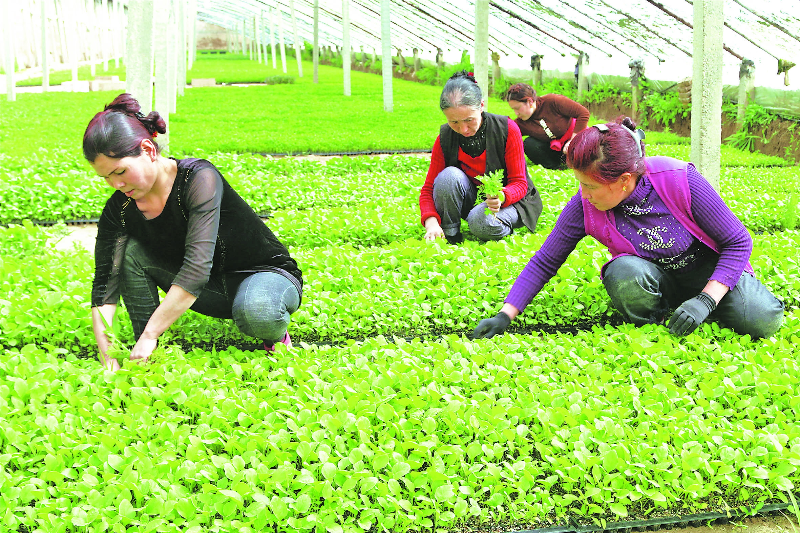
Photo taken on April 10, 2020 shows villagers work in a greenhouse at Qinabagh Village in Bixibagh Township in Kucha City of Aksu Prefecture, northwest China’s Xinjiang Uygur Autonomous Region. In 2020, Qinabagh Village raises 28 greenhouses to cultivate more than 10 kinds of vegetable seedlings such as peppers, tomatoes and eggplants, serving as an example for local villagers to develop facility agriculture and courtyard economy. Photo by Niaz Rehman

Photo taken on August 27, 2020 shows villagers dry hot peppers at their courtyard in Santanghu Town in Barkol Kazakh Autonomous County of Hami Prefecture, northwest China’s Xinjiang Uygur Autonomous Region. Barkol Kazakh Autonomous County encourages enterprises to contract with farmers for planting agricultural products based on market demands. Photo by Zhang Jiangang
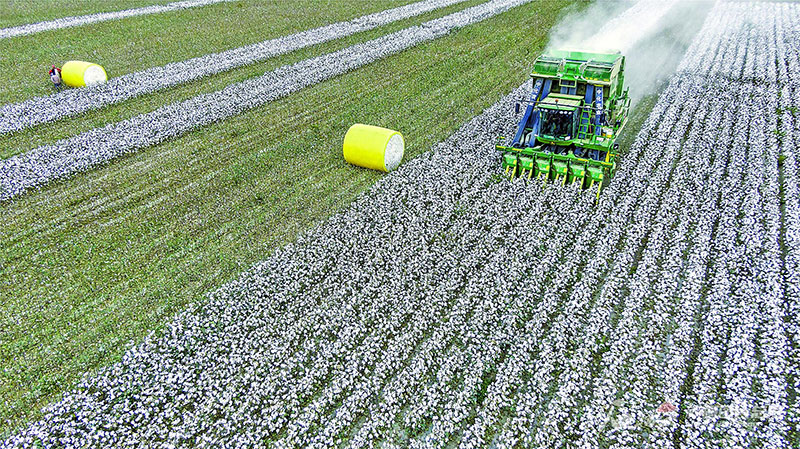
Photo taken on September 28, 2020 shows a cotton picker works in the cotton filed at Khorja Village in Dunkuotan Township in Yuli County of Bayingolin Mogolian Autonomous Prefecture, northwest China’s Xinjiang Uygur Autonomous Region. As a national high-quality commodity cotton base, Yuli County has a cotton planting area of 1 million mus (one mu equals to 0.067 hectare) in 2020, among them, 960,000 mus are machine-picked cotton. Photo by Li Fei

Photo taken on June 8, 2020 shows the farmer Abdureyim Yasen loads muskmelons on his farm vehicle at Yukakbaren Village in Baren Township in Shule County of Kashgar Prefecture, northwest China’s Xinjiang Uygur Autonomous Region. In 2020, muskmelons produced in 2456 arched sheds in Baren Township in Shule County have been harvested. Photo by Li Rui
In Xinjiang, the coverage rate of improved grain varieties has reached more than 99%; the planting area, the unit yield, the total output, the commodity volume and transfer volume of cotton have been ranking first for 26 consecutive years in China; the planting area of specialty crops has exceeded 10 million mus (one mu equals to 0.067 hectare); the new agricultural entities such as family farms and farmer cooperatives has exceeded 280,000; there are 500 leading industrialized agricultural enterprises at the autonomous region level or above (41 at the national level), 13,500 industrialized agricultural organizations, 12,500 agricultural product processing enterprises with an output value of 176.28 billion RMB yuan; the comprehensive mechanization level of the cultivation and harvesting of the main crops has reached 84.89%, ranking top among provinces. This is the report card of the agricultural development in Xinjiang by 2020.







